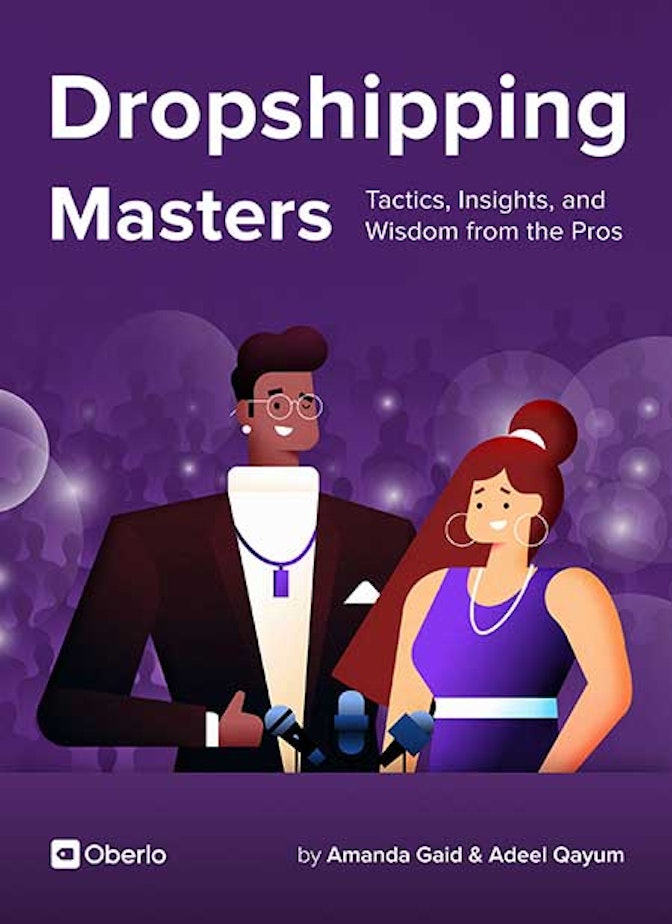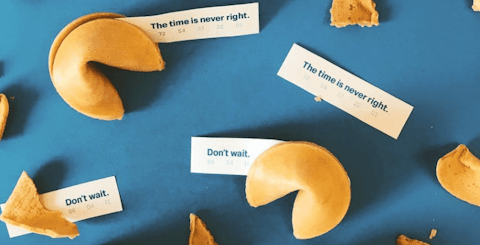No one is perfect, and no successful dropshipper has ever reached to his or her elite status without a few bumps along the way.
From choosing the wrong payment gateway to not considering visitor experience, even the most seasoned entrepreneurs can make mistakes when trying to build and grow a dropshipping store.
Our Dropshipping Masters are no different.
In this chapter, we’re going to focus on some of their biggest dropshipping failures so you can get a better idea of what to expect as you make your own decisions.



Fulfilling orders manually
Manual fulfillment can be a drain on time and resources. While it doesn’t take too much time when you’re just starting out and you’re at 10 orders a month, what happens when you reach hundreds or thousands of them?
As Jacky Chou and Albert Liu found out, this method of order fulfillment isn’t feasible for the ambitious dropshipper.
→ Click Here to Launch Your Online Business with Shopify

Jacky Chou says,
“From WordPress, I was manually fulfilling about 5,000 orders a month. I did it probably for six hours a day sometimes. It was ridiculous. With Oberlo, it’s a lot easier, since you don’t have to fulfill as many times.”
The takeaway: Use Oberlo to streamline your dropshipping operations!
Copying other people’s Facebook ads
When you first create a Facebook ad, it’s second nature to see what others are doing to try and figure out what’s resonating with a particular audience. However, many dropshipping entrepreneurs enter a state of self-doubt and think their ads might not be as big a hit.
Unsurprisingly, they carbon-copy ads that are running and think they struck gold. But more often than not, this isn’t feasible.
As Yuanda Wang tells us, you are wrong if you think you’ll become successful replicating other dropshippers’ ads.

Yuanda Wang says,
“The number one mistake that I made in the beginning was copying other people’s ads. When I started out, I felt like I didn’t know how to make engaging content at all.
And the difference between now and then is now I understand that people don’t want to see just an ad. They want the entire experience. So now, you have to make an ad that’s super subtle, in a way that it doesn’t seem like ad. My approach is for it to seem like a meme.”
The takeaway: Your ad is the first thing people will notice, provided that it isn’t yawn-worthy. That means original content, captivating images, and other elements that stand out in people’s feeds.
Thinking it’s easy to market a store
Marketing is essentially the biggest revenue-generating activity for ecommerce stores. Unfortunately, it’s also one of the biggest headaches.
What worked last week may not work today. Algorithms are changing, and every social media platform is releasing feature after feature.
So whoever thinks it’s easy to market a store is setting themselves up for disappointment.
Jeffrey Ho’s biggest frustrations came with learning how to market a store.

Jeffrey Ho says,
“It’s easy to put up a store and make it look good, but being able to market the products and the store itself is a different story. That was one of the things that were holding me back from making it successful. I think it takes time and effort to be able to learn from scratch the marketing process that works well for your store.”
The takeaway: Marketing should be something that you master as soon as possible.
Not reading product reviews
Several entrepreneurs make product-related dropshipping mistakes. A common mistake is choosing products without exploring what others think of it. For them, the visual appeal of an item is a sign that it is going to resonate well with the audience.
The reality, however, is almost the opposite. As Harry Coleman discovered, neglecting product reviews could land your business in hot water.

Harry Coleman says,
“One of the biggest mistakes I’ve made is not reading reviews of products. You you may find a product which looks good, but then in the AliExpress comments, you find that people are not happy with the product.
Or you see an advert or someone selling something similar, and again, you don’t read the comments, you just look at the engagement, and you go ahead and start to sell it, and the product is just naff.
Again, you’re just gonna burn through a ton of money. You may make a load of sales, but trust me – you will get stung with charge-backs and returns.”
The takeaway: Don’t skimp on reviews when choosing products to sell through your store. Items with average to bad reviews are the products to avoid dropshipping.
Being careless with apps
From automating an email marketing campaign to recommending additional products in a widget, it’s common for dropshipping entrepreneurs to use apps that help them streamline their operations. However, some make the mistake of being too casual with their use, overlooking the fact that ecommerce apps are just as prone to hacks and bugs as the apps installed on their smartphones.
As Ryan Carroll got to know, being careless with an app can backfire massively.

Ryan Carroll says,
“We had this tracking app that’s supposed to send tracking numbers, everything like that, and it wasn’t actually fulfilling any of the orders. Even though they were being shipped out, it wasn’t sending the tracking numbers and marking them fulfilled. And we had 15,000 orders that were just unfulfilled.”
The takeaway: Conduct an occasional check on the apps you install on your ecommerce website to ensure their efficient functioning.
Using too many suppliers
A famous proverb says that variety is the spice of life, but for many dropshippers it is the dependable and constant that make life easier. Assuming you use multiple suppliers for the same product or service, the coordination needed to manage relationships and stock levels between a large pool of vendors can become a stressful burden.
Speaking to us, Andreas Koenig and Alexander Pecka revealed what dropshippers are missing out on by using several different suppliers.

Andreas Koenig says,
“We had 40 items in this store from various suppliers. That was a big mistake. Now, we have two suppliers and a really good connection with them.
It’s better to work like that because when we have a winning product and the connection with the supplier works well. I can talk to them and ask them what they’re selling that’s also very popular in their store.
Then they can give us some input. They know what that type of customer wants too, because they’re in the same niche.”
The takeaway: It’s easier to build and grow a relationship with a few suppliers than it is with several.



Letting small negative feedback dictate big decisions
Some dropshippers seem to believe that any negative customer experience is a personal reflection on the quality of their setup.
What they fail to realize is that the majority of store owners get a negative reaction at some point or another. Hence, first-time entrepreneurs shouldn’t immediately quit dropshipping when a customer comes out to complain about a specific aspect of their business.
In our interview, Jenny Lei made sure to tell us how letting one negative comment from a customer influence your decision making can hurt your long term goals.

Jenny Lei says,
“At first, if someone said that their bag zipper broke, I’d stop selling the bag because I’d think, ‘I can’t have this happen again.’
But even the best companies are going to have zippers breaking, something is going to go wrong in shipping, or something is going to get smushed. It’s okay. I have customers where something went wrong, I fixed it, and they came back and bought again.”
The takeaway: Care about your customers, but don’t let one negative comment bring you down.
There you have it. The biggest mistakes our Dropshipping Masters made and what you can do to avoid them over the course of your journey.
In the next chapter, you’ll directly hear from these successful entrepreneurs as they share tips and advice for budding dropshippers.


